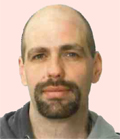
|
Jorge Mendes de Jesus
Programmer
ISRIC- World Soil Information
Netherlands
Biography
Jorge S. Mendes de Jesus has a master degree on Agricultural Engineering from the University of Algarve, after completing his master, he moved to Israel to study at University of Ben-Gurion of the Negev where he obtained his Ph.D. After concluding his studies he worked at the Joint Research Center in Ispra, Italy on two EU projects: INTAMAP and EuroGEOSS. The following job was at Plymouth Marine Laboratory, Britain where he participated on the NETMAR project. Currently he lives in Wageningen, The Netherlands and works at ISRIC - Soil Information Center as software developer and researcher.
Abstract
SoilGrids + Soilinfo: Global Soil Data on Your Palm
Co-Authors: Tomislav Hengl, Dr, ISRIC - World Soil Information
The International Year of Soils 2015, raises an important debate on a resource that tends to be ignored and/or underappreciated but of major importance for the development of mankind: Soils. The quantification of soil classes (e.g: Regosols, Arenosols) and attributes (e.g: pH, organic matter) is of extreme importance for crop development in agriculture, environmental impact studies, etc. The availability and accessibility of detailed soil data is also a concern. SoilGrids is a collection of updatable soil properties and classes maps of the world at a relatively coarse resolution of 1km (0.0083 degrees) at 6 depths and upper and lower uncertainty values. These maps were generated using a selection of approximately 75 global environmental covariates representing soil forming factors (e.g. parent material, climatic areas etc.) and soil profile points (ca. 110,000 data points). Read more in PLOS One 0105992. The mapping technology and procedure to generate 1km soil grids is one part of the research being done at ISRIC, the other part is the availability/accessibility and user interaction with the dataset. The dataset is dynamic, as more soil profile data become available and the covariances increasing quality, the 1 km soil grids maps will be updated, creating a dataset with multiple revisions and improvements. Usage and manipulation of data is supported by different programming tools like the GSIF package on R-cran. Another conviction is that data have to be distributed using multiple web services according to the user's need, either specific REST for tile download and point query or tile download using WMS and WCS. Soilgrids1km, soil data anywhere for everyone objective was achieved by developing a mobile phone app (SoilInfo) available for Android and iOS that combines the multiple web services allowing for the user to obtain soil data in their mobiles devices.
|

